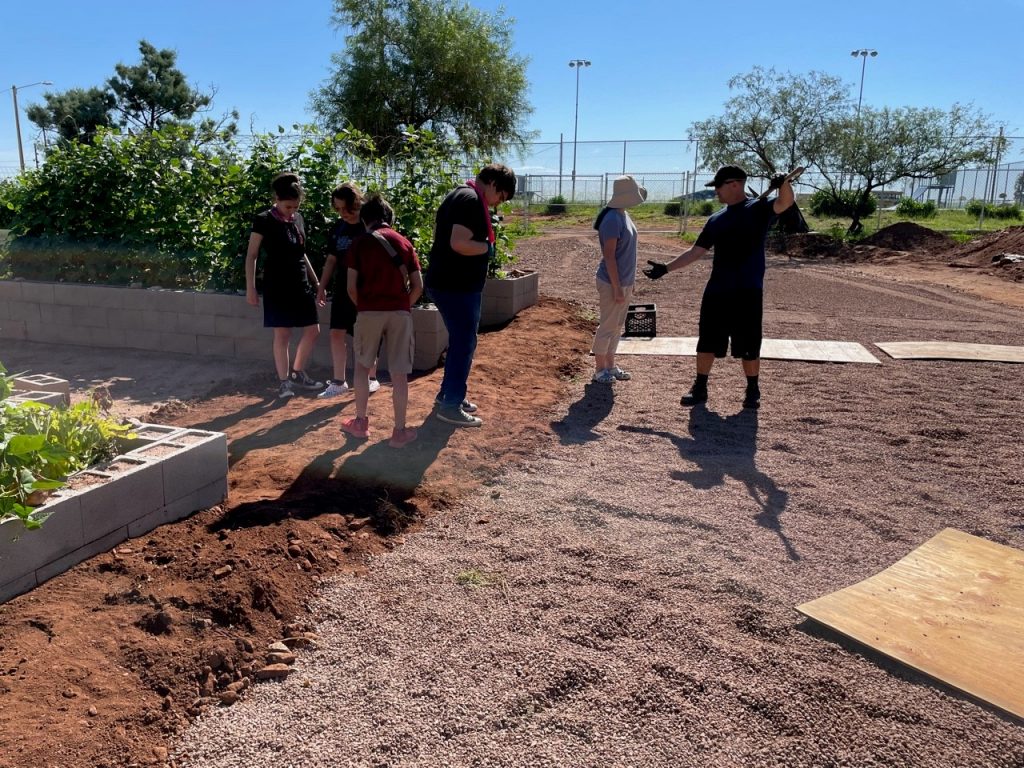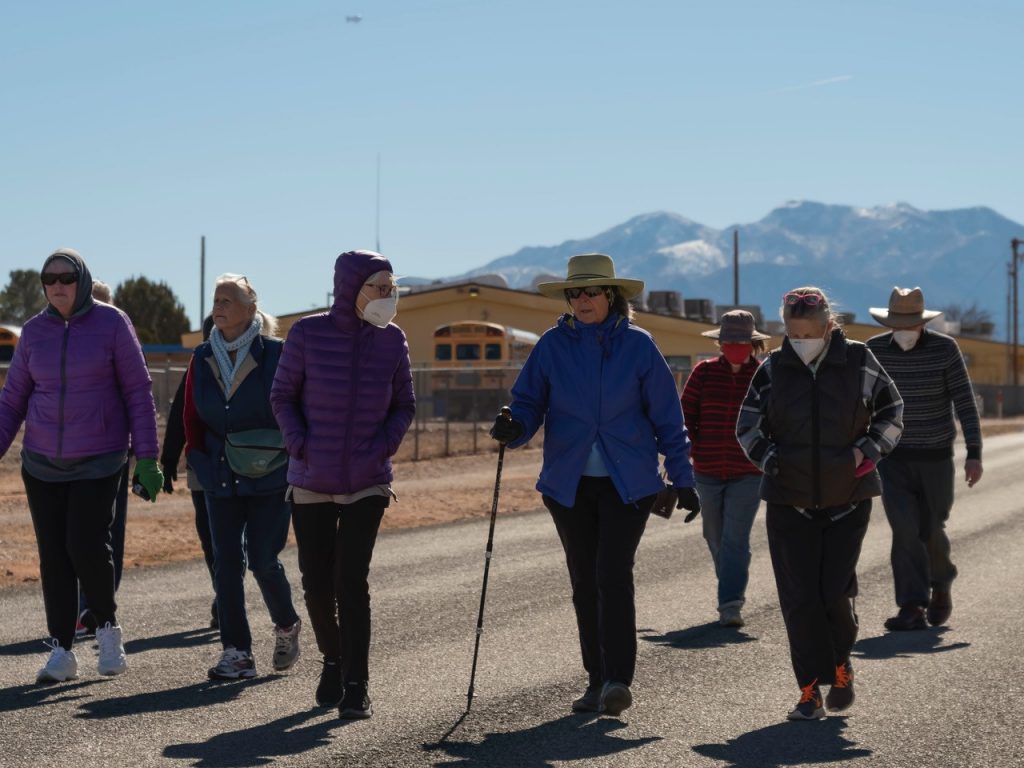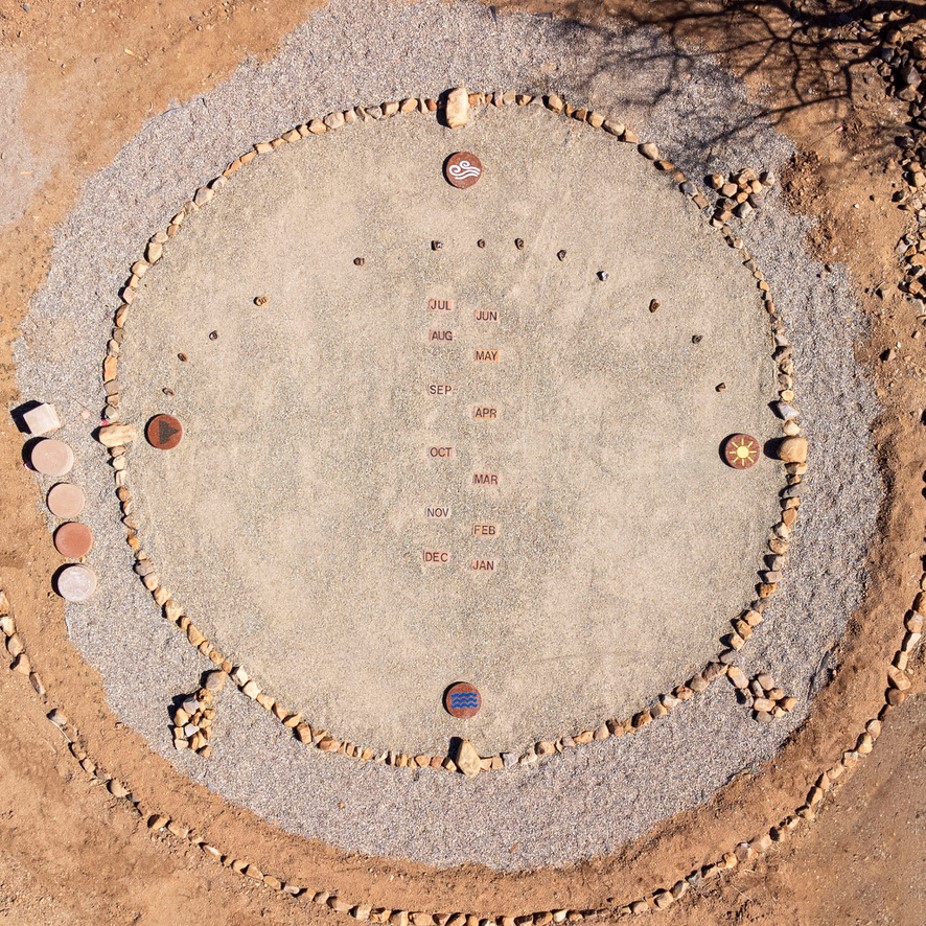History
2018
2019

2020

2021



2022


In the summer of 2018, while Holly Weichelt was driving through Huachuca City, as she did every workday, she wondered how she could provide fresh produce to the residents of this impoverished (34% below the poverty level with 46% of children living in poverty), food desert who did not have transportation to drive to a supermarket in Sierra Vista or who did not have the money to pay for fresh produce once there. On this fateful day in June, she realized that building a community garden and teaching the residents how to garden was the solution. She created a Facebook page and asked if there was anyone willing to provide property in the Town where a community garden could be established. Mr. James Goad, owner of the successful Mr. Shed, not only volunteered a piece of his vacant property, but also offered to build the raised garden beds. This would be only a temporary solution for the upcoming year, until other property could be found that allowed teaching opportunities, but this was the start of Huachuca City Community Garden. The membership grew and the organization soon gained Arizona nonprofit status, ultimately becoming a 501(c)3.
In the summer of 2019, the Garden successfully grew 2000 pounds of fresh vegetables on Goad’s property and distributed the produce through the Library and Senior Center in Huachuca City. During that summer, the search was on to find a new permanent location for the Garden. A fateful interaction with Suzanne Harvey, the Director of the Huachuca City Library and Senior Center, resulted in the identification of as much as 2 acres of beautiful space in a Park immediately north of the Library as a potential location. The City Council approved the development of this Garden Park and the search for funding to develop that area began. Ann Aust of Huachuca City Community Garden submitted an Innovative Grant application to the Legacy Foundation of Southeast Arizona in September, 2019. This application focused on building two garden areas, one for production of fresh vegetables for those in need while teaching gardening and healthy eating to adults and a second area for teaching children how to garden, while incorporating STEM learning opportunities inspired by Nature in this beautiful setting. The grant aligned well with the Legacy Foundation mission to promote population health and community wellness. The application was approved for funding in 2020.
Plans for the Gardens were developed and approved with assistance from Caleb Weaver of Borderlands Restoration Network. This collaboration proved to be especially important when Huachuca City Community Garden learned that the rainwater runoff from the 2.5-acre Town buildings and parking lot area immediately south was to be directed through an added drain system to empty west of the proposed Garden area. Because of the slope of the land, much of this runoff would proceed downhill potentially flooding the Garden area. Borderlands quickly designed a series of 14 rainwater infiltration basins (36,000 gallons of capacity which results from a 0.75 inch rainfall) on the west side of the Garden to control the direction and rate of flow of the water, while allowing infiltration of the water into the soil. These basins, initially dug by the Town, were smoothed and then lined with rock (50 tons) carried and carefully hand-placed by Army volunteers from C Company, 2-13th Aviation Regiment on Fort Huachuca, just a few miles from Huachuca City. Without their faithful volunteer help over a 5-month period, this could not have been accomplished. The water that will infiltrate into the soil of the basins during rain events will more than replace water being used to water the vegetables in the Garden and will also water the native trees, bushes and vines from Borderlands Restoration Network that were planted around these basins to stabilize the basins and provide shade and windbreak, while enhancing the beauty of the area.
Even in the midst of the Covid-19 outbreak, Huachuca City Community Garden was able to get the land graded by KE&G and to hire local experts to fence (Stan’s Fence) the property, provide plumbing (Drainworks) all through March, and build the raised beds through April (Grasshopper Landscape) for the Production Garden. The soil for the organic beds was carefully developed in consultation with a garden soils laboratory (IAS Labs), the beds were filled, and members of Huachuca City Community Garden got to the business of laying the drip irrigation and planting the beds on the 9th of May. The vegetables grew very well, even though it was one of the driest and hottest summers on record. Harvests began the last week in June and continued 3 days per week throughout the summer months and into October, when a killing frost put an end to production. The fresh produce included tomatoes, eggplant, zucchini, green beans, yellow squash, patty pan squash, butternut squash, cucumbers, cantaloupe, watermelon, pumpkin, okra, and sweet bell peppers. During that time 3,500 pounds of fresh, organic vegetables were harvested and successfully distributed to federally subsidized housing units and other locations where residents were in need of fresh, healthy, organic produce. The members harvested and packaged this produce while wearing masks and fresh gloves as precautions during this Covid-19 outbreak.
The Teaching Garden for children is currently being developed. This area will have additional raised garden beds just for children with a 10’ by 12’ greenhouse for growing seedlings and conducting garden experiments. This area will also have STEM educational exhibits, some interactive, to highlight 4 important elements of Nature that impact the gardens and our lives on a continual basis: sun, earth, water, and air. These will be introduced in a Medicine Wheel that also serves as a living sundial where those entering will stand and the shadow produced will indicate the time. One of the highlights of this teaching effort is the Davis Weather Station, funded by RAIN (Rural Activation and Innovation Network, funded by the National Science Foundation) which is collecting weather measurements and transmitting that important data to the Weather Cloud where it becomes available to teachers and students even remotely, especially important in these challenging times with Covid-19. The data will be stored for years and can serve as the basis for many studies that students of all ages can do as part of STEM programs.
Keep coming back to this site to learn more as the Teaching Garden develops.